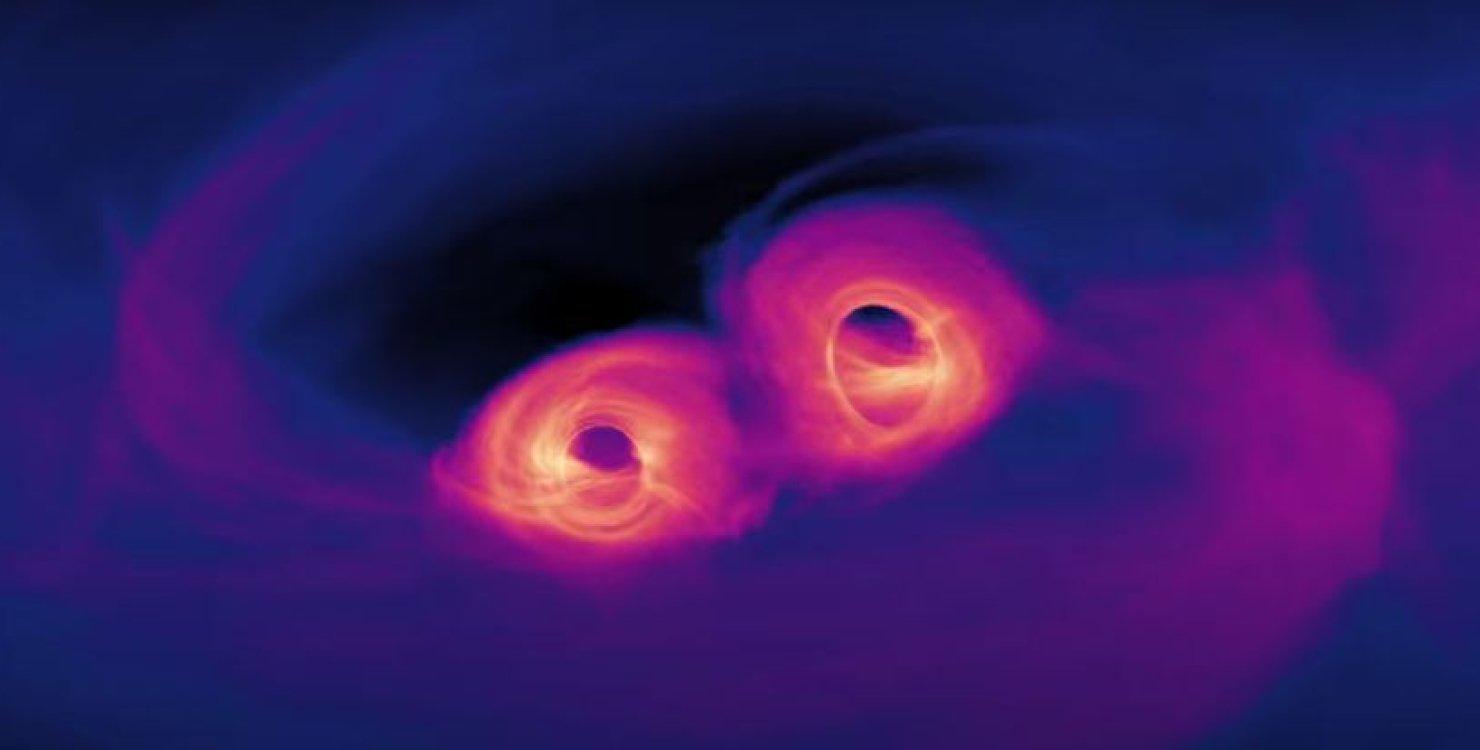Two supermassive black holes 1 billion light-years away from us are destined to collide within the next 3 years.
A group of scientists from the University of Science and Technology of China announced that their observations show that something strange is happening at the center of the galaxy SDSS J1430+2303, located 1 billion light-years away. Scientists hypothesize that we will soon witness the collision of two supermassive black holes, reports Science Alert.
Data from Chinese scientists shows that strange events are happening at the core of the galaxy SDSS J1430+2303. The ever-changing pattern of X-ray emission suggests that there are two supermassive black holes here, which will merge into one supermassive black monster within the next three years.
Preliminary observational data suggests that black holes are converging there, but scientists are 99% certain. This 1% may indicate some other abnormal phenomenon. In any case, astronomers intend to observe the development of events in this very distant galaxy.

If two supermassive black holes collide there, scientists can record the radiation from the event. Currently, this is one of the most anticipated events in astronomy, as these cosmic objects may merge into a single black hole in the near future.
According to preliminary estimates, the masses of these black holes are almost equal, each having about 200 million masses of our Sun. According to scientists, if the collision happens, it will be one of the most important events in modern astronomy.
For the first time, astronomers detected the collision of black holes only 7 years ago, and since then many such events have been detected. Collisions of black holes are known because such a merger results in the release of gravitational waves into space. These waves are caught by two special detectors on Earth – LIGO and Virgo.
But it should be said that these detectors can catch gravitational waves from colliding black holes with the mass of some stars or generally the same mass.
Therefore, if black holes have a mass of one million to one billion solar masses, such collisions can be recorded using X-rays in ground-based or space-based telescopes.
Scientists are still debating how incredibly massive black holes appear, and a similar collision in the galaxy SDSS J1430+2303 could shed a lot of light on the matter. After all, many scientists are inclined to the fact that supermassive black holes still appear as a result of the collision of supermassive black giants.

Prone to fits of apathy. Unable to type with boxing gloves on. Internet advocate. Avid travel enthusiast. Entrepreneur. Music expert.



